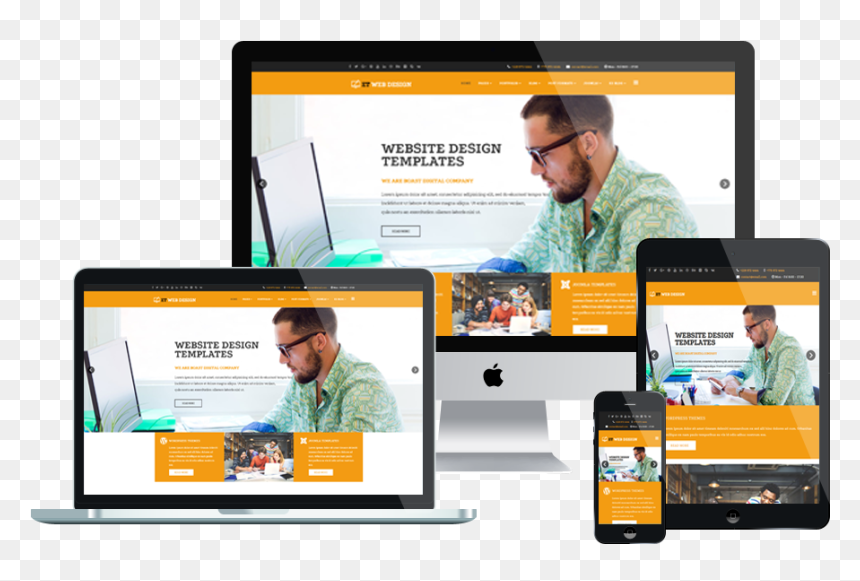Crafting the Perfect Website: A Guide to Web Design in Dublin

In an increasingly digital world, a business’s website is its most vital asset. It acts as the face of the brand, a marketing tool, and a platform where customers can learn about products or services. For businesses in web design in Dublin, a city known for its innovation and entrepreneurial spirit, having a well-designed website can set the stage for success in a competitive marketplace.
This blog will explore the essential components of crafting the perfect website for Dublin businesses, offering insights into the latest design practices, user experience trends, and local considerations.
1. Understanding Your Audience
The first step in crafting a perfect website is understanding your audience. Dublin is home to a diverse and tech-savvy population, and a one-size-fits-all approach will not work. Identifying the specific needs, preferences, and pain points of your target audience will allow you to tailor your design for maximum impact.
Questions to Consider:
- Who are your customers? Are they young professionals, students, families, or international clients?
- What are their online behaviors? Do they access your site via mobile or desktop, and what features are most important to them?
- What are their challenges? Understanding their needs will help you design a user-friendly site that addresses their concerns.
For instance, a tech startup in Dublin might need a sleek, modern website to appeal to investors and partners, while a local restaurant would benefit from an easy-to-use reservation system and a menu that is easily accessible on mobile devices.
2. Mobile-First Design Approach
In a city where people are constantly on the move, mobile accessibility is a priority. Crafting a website that offers a seamless experience on all devices is crucial for businesses in Dublin. A mobile-first design approach ensures that the user experience (UX) on smaller screens is just as smooth and functional as it is on desktops.
Mobile-First Design Features:
- Responsive layouts that adapt to different screen sizes and orientations.
- Optimized images and media for faster load times on mobile.
- Mobile-friendly navigation such as sticky headers, collapsible menus, and large touch-friendly buttons.
For local Dublin businesses that rely on attracting walk-in customers or engaging users in real-time, such as cafes or retail stores, mobile-first design can drive significant foot traffic and conversions.
3. Clear, Intuitive Navigation
No matter how visually stunning a website is, if users cannot find what they’re looking for, they will leave quickly. Clear, intuitive navigation is a fundamental aspect of web design, helping users find information with ease. Dubliners, who are used to fast-paced city life, value efficiency, and this should be reflected in your website.
Best Practices for Website Navigation:
- Simplicity: Limit the number of menu items to essential categories.
- Consistency: Ensure that navigation elements are consistent across all pages.
- Search Functionality: For larger sites, include a search bar to allow users to find specific content quickly.
- Sticky Navigation: A navigation bar that follows users as they scroll keeps important links accessible.
Businesses in Dublin, from professional service providers to local retailers, should focus on delivering easy-to-navigate websites that make it simple for users to explore products, book services, or get in touch.
4. High-Quality Visual Design
The visual design of a website is the first thing visitors notice. In Dublin, a city known for its creative arts and vibrant culture, an eye-catching design can set your business apart from the competition. Whether you’re designing a corporate site or a boutique e-commerce platform, your site’s aesthetics should reflect your brand identity and communicate your values.
Elements of Strong Visual Design:
- Branding: Use colors, fonts, and imagery that reflect your brand’s personality. Consistent branding builds trust and recognition.
- White Space: Don’t overcrowd your pages. Adequate white space allows key elements to stand out and improves readability.
- Visual Hierarchy: Ensure that the most important information, such as calls-to-action, headlines, and key visuals, draw the user’s attention first.
- Custom Graphics: Invest in custom graphics or high-quality photography to add a unique, professional touch to your site.
For creative industries in Dublin, such as design agencies, theaters, or art galleries, investing in top-tier visual design is essential to showcase their offerings and appeal to an artistic audience.
5. Content That Engages and Converts
Beyond aesthetics, content is a core component of any website. Effective content should engage, inform, and convert visitors into customers. In Dublin, businesses that speak directly to the needs and desires of their audience through compelling copy and valuable content will see better results.
Types of Content to Include:
- Clear Value Propositions: Immediately communicate what your business does and why customers should choose you.
- Calls-to-Action (CTAs): Whether it’s “Get a Free Quote” or “Sign Up for Our Newsletter,” CTAs should guide users toward taking the desired action.
- Blog and Resource Sections: Offer valuable insights, tips, or industry news that engages visitors and establishes your business as a thought leader in Dublin’s market.
- Testimonials and Case Studies: Showcase client feedback and successful projects to build trust with potential customers.
Content should be optimized not only for users but also for search engines (SEO). Dublin businesses should pay attention to SEO best practices, including relevant keyword integration, optimized meta tags, and well-structured headings to ensure better visibility in search engine results.
6. Fast Load Times and Performance Optimization
In a fast-paced city like Dublin, users expect websites to load quickly. A slow site can lead to frustration, higher bounce rates, and lost business. Crafting a high-performance website that loads in under three seconds is crucial for delivering a seamless experience and boosting conversions.
How to Improve Website Performance:
- Optimize images and media by compressing them without sacrificing quality.
- Use a Content Delivery Network (CDN) to serve content from the closest server, speeding up load times for users across Dublin and beyond.
- Minify CSS and JavaScript to reduce file sizes and improve page load times.
- Enable browser caching to store site data on users’ devices, reducing load times on return visits.
For businesses in competitive Dublin markets such as e-commerce or hospitality, performance optimization can make a significant difference in user satisfaction and sales.
7. SEO Optimization for Local Visibility
For Dublin businesses, local SEO is essential to ensure your website ranks well in search results. Whether you’re targeting the city’s tech scene, tourists, or local consumers, SEO can drive organic traffic and increase visibility.
Local SEO Best Practices:
- Location-Specific Keywords: Incorporate Dublin-related keywords in your website content, such as “web design in Dublin” or “best coffee shop in Dublin.”
- Google My Business: Ensure that your business is listed on Google My Business with accurate contact details, opening hours, and location.
- Local Backlinks: Build relationships with other Dublin-based businesses or organizations to gain local backlinks and boost your website’s authority.
- Optimized Meta Descriptions and Titles: Ensure your meta tags are optimized with relevant keywords to improve click-through rates from search results.
A well-executed local SEO strategy will ensure that when Dublin customers search for your services, your business appears at the top of the results.
8. Security and Privacy
With increased attention to data privacy and security, especially under GDPR regulations, Dublin businesses must prioritize website security. Users expect their data to be protected when interacting with websites, whether they are filling out forms, making purchases, or subscribing to newsletters.
Key Security Features:
- SSL Certificates: Ensure your website uses HTTPS encryption to secure user data.
- Regular Software Updates: Keep your website’s software, plugins, and themes updated to prevent vulnerabilities.
- Data Protection Practices: Clearly communicate your data protection and privacy policies to users.
- Strong Password Protocols: Implement strong password requirements for both your site’s admin area and user accounts.
Implementing robust security measures will not only protect your customers but also enhance your brand’s credibility and trustworthiness.
Conclusion
Crafting the perfect website for Dublin businesses requires a combination of cutting-edge design, user-centric features, and local SEO optimization. Whether you’re a tech startup, a restaurant, or a retail store, your website should not only reflect your brand’s personality but also provide an intuitive, engaging, and high-performing experience for visitors.
By prioritizing mobile-first design, high-quality content, strong visuals, and fast performance, you can ensure your Dublin-based business stands out in a competitive market. With the right approach, your website will not only attract traffic but convert visitors into loyal customers, helping your business thrive in the digital landscape.








